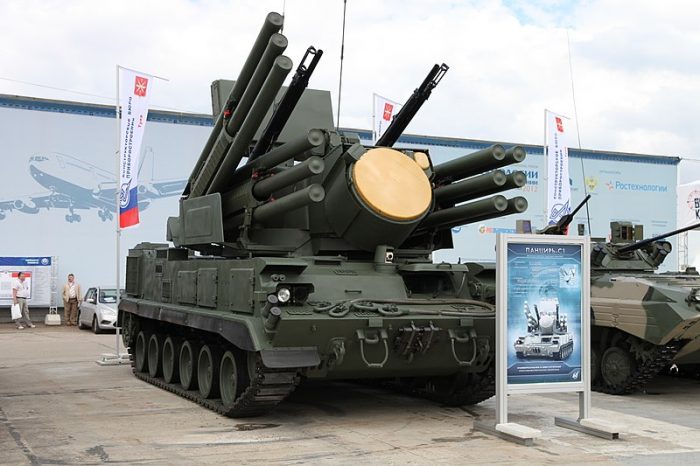At a time when the Myanmar armed forces have drawn global condemnation for allegedly killing hundreds of pro-democracy protesters, the news of Russia arming them with Pantsir S-1 air defense systems is likely to stir the hornet’s nest.
Earlier this year, Russia and Myanmar had signed an agreement for the supply of a batch of missile and artillery air defense systems Pantsir-S1, unmanned aerial vehicles Orlan-10E and radars.
Russia, China, and India were among the eight nations which attended the Military Day parade in Myanmar capital Naypyidaw on March 28. The same day, the Myanmar military was accused of killing over 100 civilians across the country.
Russia, particularly, has drawn criticism for its arms supply to the military amid the ongoing violence perpetrated by the country’s armed forces, known as Tatmadaw.
According to the latest global arms trade report by Stockholm International Peace Research Institute (SIPRI), Russia has supplied Myanmar Army with a wide variety of military equipment since the 2000s.
These included fighter jets, vehicles, helicopters, missiles, and air defense systems which include Mi-24 helicopters, MiG-29 fighter aircraft, Mi-2 light helicopter, Yak-13 trainer aircraft, Su-30MK fighter, Igla-1 MANPADS, 2S6M Tunguska tracked self-propelled anti-aircraft gun, D-30 122mm howitzer, S-125 Pechora-2M air defense missile systems and modernized version of BRDM-2 wheeled reconnaissance armored vehicles.
The Pantsir S-1 air defense system seems to be the latest shipment to the Southeast Asian nation although there is no confirmation on the number of such weapons delivered.

The Pantsir-S1
The Pantsir S-1 is one of the most popular SHORAD (short-range air defense) systems produced by the KBP Design Bureau of Tula, Russia. Being a further development to the venerable 2K22 Tunguska, the Pantsir is a family of self-propelled, medium-range surface-to-air missile and anti-aircraft artillery systems.
The Pantsir-S1 was designed to provide point air defense of military, industrial and administrative installations against aircraft, helicopters, precision munitions, cruise missiles, and UAVs. It can also provide additional protection to air defense units against enemy air attacks employing precision munitions, especially at low to extremely low altitudes.
The system has been used extensively in the conflict zones in the Middle East, including Syria, Libya, and even in the Ukrainian War in Donbas. In Syria, the system scored its first combat kill by downing a Turkish Air Force RF-4E carrying out a reconnaissance flight over the Syrian coast near Latakia on 22 June 2012.
Besides, the system was deployed as part of the Russian military assistance to the Assad government against rebel groups since 2015.
A Russian poster displayed at the International Military-Technical Forum “ARMY-2017”, from March to July 2017, claimed that Russia’s Pantsir-S systems deployed in Syria destroyed 12 flying objects, including the Heron, Bayraktar, RQ-21A UAVs, and also various missiles and an aerostat. At the beginning of October 2017, it was reported that the Pantsir destroyed two MLRS “Grad” missiles launched by ISIL.
In January 2020, Valery Slugin, Chief Designer for Air Defense Systems at KBP reported that Pantsir air defense systems had intercepted about 100 drones during their combat operations all over the world, most of which took place in Syria.
The Pantsir missiles were also successfully used against various ground targets, including mobile terrorist targets in Syria.
Follow EurAsian Times on Google News




